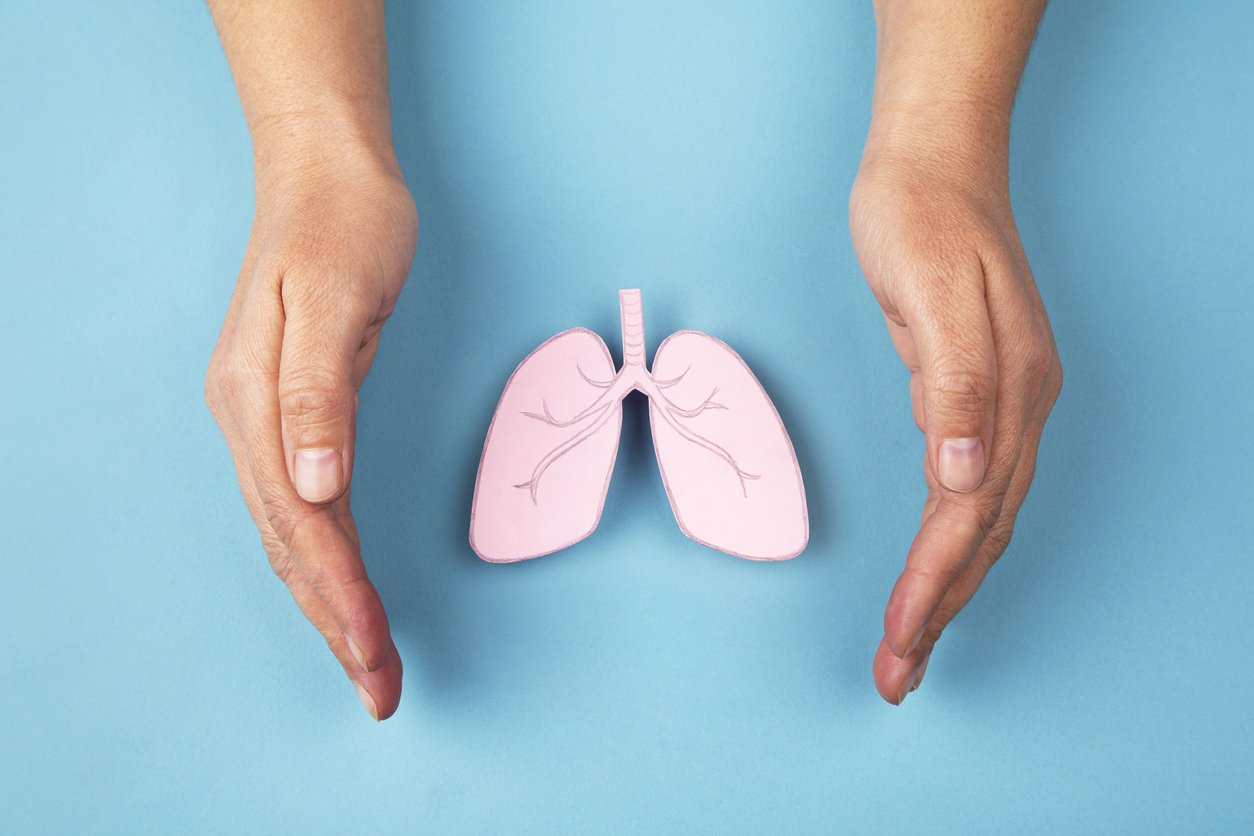
Human lung made of paper and hands isolated on blue background
Pulmonary rehabilitation should be made more widely available for respiratory patients, the 2021 ITS Scientific
Meeting heard. Noted expert in the area, Prof Thierry Troosters, Professor in Rehabilitation Sciences, KU Leuven, Belgium, provided an update on pulmonary rehabilitation and its beneficial role in many respiratory conditions.
He pointed out that pulmonary rehabilitation has been shown beyond any doubt to be effective: Research
has demonstrated that it improves exercise capacity (6MWD), quality-of-life and symptoms, brings an
improvement in mood status, a reduction of utilisation of healthcare resources, and a reduction of postural balance and risk of falling.
“In terms of programme components, we all agree that endurance and resistance exercise training are absolutely crucial, but also other components are important [eg, smoking cessation].” Prof Troosters outlined the main
scenarios for pulmonary rehabilitation, which include stable patients with conditions such as chronic
obstructive pulmonary disease, interstitial lung disease and pulmonary arterial hypertension, where it can help improve muscle function, exercise tolerance, symptoms and quality-of-life; rehabilitation post severe exacerbation, where it has been shown to reduce readmission risk and increase survival (it may be easier to start four weeks post-discharge
rather than immediately, but uptake and referral remain a problem); and rehabilitation during an exacerbation
(resistance training; lifting weights), with a focus on blocking deleterious effects on skeletal muscle function.
“If you catch patients with COPD in a stable phase then one of the best things you can offer these patients
is a pulmonary rehabilitation programme. It will improve exercise tolerance and quality-of-life in these
patients, way beyond what we call a minimal difference in these patients…. The evidence is there, we know it
works, for now it is time to implement this in our clinical routine across the different lines of healthcare.”
A properly designed multidisciplinary pulmonary rehabilitation programme will also improve anxiety and depression in patients with these issues, which is about a third of patients with chronic lung diseases, he added.
It is important to note, however, that exercise training programmes need to be adapted to the exercise limitation of patients to maximise effects and comfort, Prof Troosters stressed. Enhancing physical activity is not a given after pulmonary rehabilitation and requires a behavioural intervention, and methodology to assess physical activity is now standardised and a framework for interventions is available, he said.
New exercise platforms (eg, telemedicine, step counters, smart phone applications) for pulmonary rehabilitation are now being explored, which should help address access and referral issues, Prof Troosters said. “We can’t just offer rehabilitation in tertiary centres very far from where our patients live so they have to travel half a day to get there. We need to get these programmes closer to the patient.





Leave a Reply
You must be logged in to post a comment.